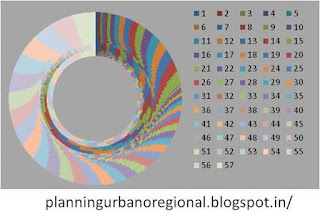Human mind needs complexity to appreciate design and aesthetics
If it’s too obvious it’s boring. If we have seen it earlier or something similar, it’s boring anyway. We always look forward to see and appreciate a piece of design or work of art or architecture which is refreshingly new, but still with a stubbornness of design expectations since we also love the nostalgia attached to the familiarity of object or subject.
Possibly the reason abstract and modern art emerged is because people were fed up of realistic and photo-realistic portraits and other painting subjects and demanded something new something avant-garde to appreciate. Though there were complexity of techniques and process involved in those elaborately detailed classical or miniature paintings but abstractness of modern art gave viewers infinite possibilities to perceive, interpret and appreciate the artworks. Though the artwork and style was new, people were still able to relate to it because of carefully chosen subjects of contemporary importance of that era or region. Similarly with architecture, possibly the abstract and minimalistic architecture emerged because people were tiered of those architectural details and geometrical orders, people later demanded purity of geometry not the order of geometry, they demanded thematic abstractness of elements not the sensory overload of detailing and Minimalistic architecture provided them all they wanted.
We have reached a time in the human evolution where we seem to have cracked the base code of aesthetics, analysing the rich history of art and architecture and documented enough in course of time for generations to come, while accelerating fast towards future. Now when we have tested basic design flavor and aesthetics of almost every kind how will we satisfy the design and aesthetic urge of humanity which is always looking out for something new to appreciate.
History shows, we have and we will find out new ways to provide the world with new design aesthetics which they will enjoy and appreciate. Fortunately there are ways to do that. Apparently there are two fronts on which we can innovate. One is technology; other is complexity of design itself. Technology will provide us materials, techniques etc. to innovate on design front and complexity of design will give us opportunity to challenge and satisfy the demanding aesthetic urge of curious human mind in field of art, design, architecture etc. What is complexity in this context? Complexity is to give them a piece of work , art or design or architecture which is difficult to grasp in one go like a puzzle, but quite familiar, contextual and easy once decoded, something which challenges the mind. Complexity provided by emerging materials, techniques and tools as well as complexity of forms, and abstractness.
By- Anoop Jha








